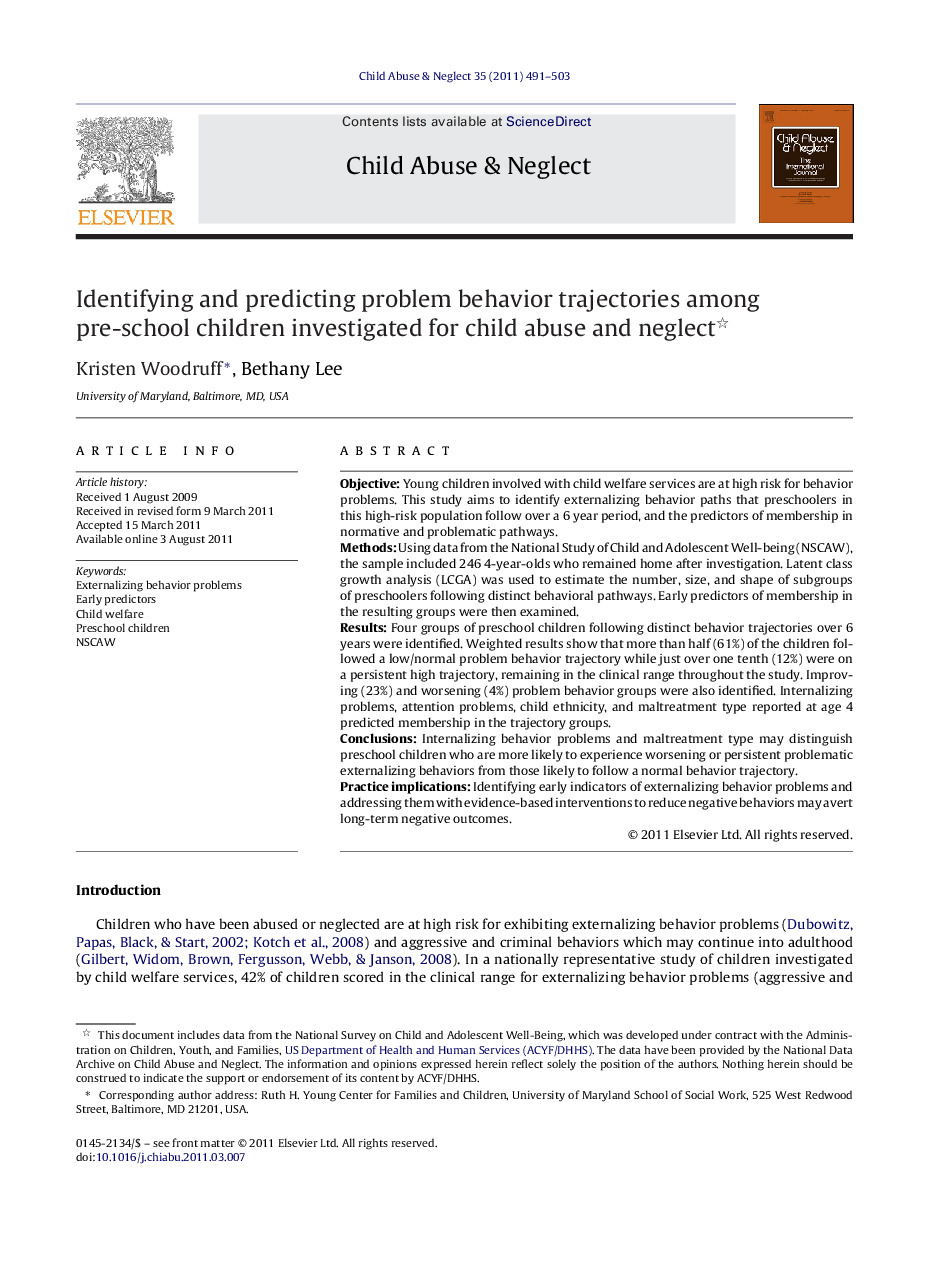| Article ID | Journal | Published Year | Pages | File Type |
|---|---|---|---|---|
| 345083 | Child Abuse & Neglect | 2011 | 13 Pages |
ObjectiveYoung children involved with child welfare services are at high risk for behavior problems. This study aims to identify externalizing behavior paths that preschoolers in this high-risk population follow over a 6 year period, and the predictors of membership in normative and problematic pathways.MethodsUsing data from the National Study of Child and Adolescent Well-being (NSCAW), the sample included 246 4-year-olds who remained home after investigation. Latent class growth analysis (LCGA) was used to estimate the number, size, and shape of subgroups of preschoolers following distinct behavioral pathways. Early predictors of membership in the resulting groups were then examined.ResultsFour groups of preschool children following distinct behavior trajectories over 6 years were identified. Weighted results show that more than half (61%) of the children followed a low/normal problem behavior trajectory while just over one tenth (12%) were on a persistent high trajectory, remaining in the clinical range throughout the study. Improving (23%) and worsening (4%) problem behavior groups were also identified. Internalizing problems, attention problems, child ethnicity, and maltreatment type reported at age 4 predicted membership in the trajectory groups.ConclusionsInternalizing behavior problems and maltreatment type may distinguish preschool children who are more likely to experience worsening or persistent problematic externalizing behaviors from those likely to follow a normal behavior trajectory.Practice implicationsIdentifying early indicators of externalizing behavior problems and addressing them with evidence-based interventions to reduce negative behaviors may avert long-term negative outcomes.
